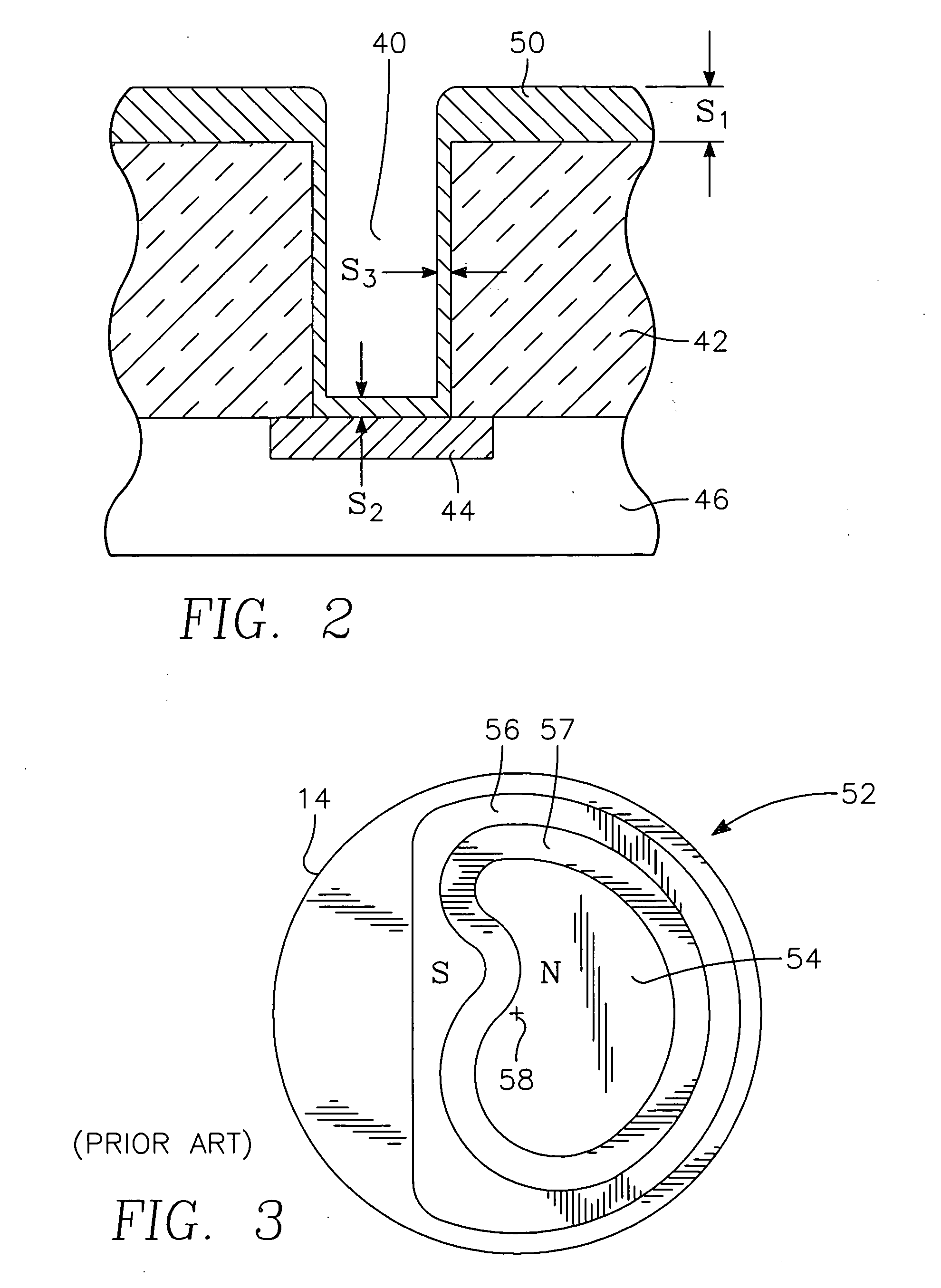Sputtering using an unbalanced magnetron
a magnetron and unbalanced technology, applied in the field of materials sputtering, can solve the problems of high heat generation, poor quality of deposited films, and relatively new hdp pvd reactors, and achieve the effects of high target power, high density, and increased plasma density
- Summary
- Abstract
- Description
- Claims
- Application Information
AI Technical Summary
Benefits of technology
Problems solved by technology
Method used
Image
Examples
Embodiment Construction
One embodiment of the invention is a racetrack magnetron 60, illustrated in plan view in FIG. 4. The racetrack magnetron 60 has a central bar-shaped pole face 62 of one magnetic polarity having opposed parallel middle straight sides 64 connected by two rounded ends 66. The central, bar-shaped pole face 62 is surrounded by an outer elongated ring-shaped pole face 68 of the other polarity with a gap 70 of nearly constant width separating the bar-shaped and ring-shaped pole faces 62, 68. The outer pole face 68 of the other magnetic polarity includes opposed parallel middle straight sections 72 connected by two rounded ends 74 in general central symmetry with the inner pole face 62. The middle sections 72 and rounded ends 74 are bands having nearly equal widths. Magnets, to be described shortly, cause the pole faces 62, 68 to have opposed magnetic polarities. A backing plate, also to be described shortly, provides both a magnetic yoke between the magnetically opposed pole faces 62, 68 ...
PUM
| Property | Measurement | Unit |
|---|---|---|
| Pressure | aaaaa | aaaaa |
| Ratio | aaaaa | aaaaa |
| Area | aaaaa | aaaaa |
Abstract
Description
Claims
Application Information
 Login to View More
Login to View More - R&D
- Intellectual Property
- Life Sciences
- Materials
- Tech Scout
- Unparalleled Data Quality
- Higher Quality Content
- 60% Fewer Hallucinations
Browse by: Latest US Patents, China's latest patents, Technical Efficacy Thesaurus, Application Domain, Technology Topic, Popular Technical Reports.
© 2025 PatSnap. All rights reserved.Legal|Privacy policy|Modern Slavery Act Transparency Statement|Sitemap|About US| Contact US: help@patsnap.com



